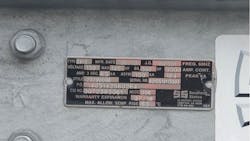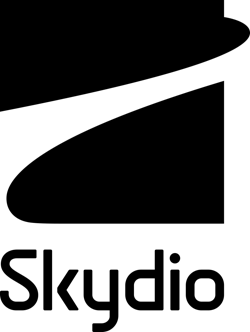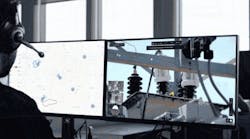The utility industry is grappling with the increasing challenge of maintaining compliance with stringent regulatory standards while managing costs effectively. As the scope of asset management and requirements continue to expand, headcount remains flat, creating a perfect storm for challenges in meeting compliance. Traditional inspection methods are often labor-intensive, time-consuming, and risky, making it difficult for utilities to keep up with the growing demands.
The Compliance Challenge:
Utility companies must adhere to rigorous inspection and maintenance protocols to ensure infrastructure safety and reliability. Regulatory demands for accurate facility ratings and substation inspections are increasing, with non-compliance leading to significant fines and penalties from bodies like NERC.
Utilities face a dual challenge: they cannot afford to inspect every asset at the required level due to limited personnel and budgets, yet they cannot afford the hefty fines associated with being out of compliance. This predicament necessitates technological solutions that enable them to do more with less. Traditional inspections involve significant safety risks, such as potential helicopter crashes and fall risks from towers, leading to accidents, increased insurance costs, and potential litigation. Additionally, these methods are resource-intensive, requiring substantial manpower and time, which is a challenge when headcount remains static.
Increasing Scope and Flat Headcount:
The scope of assets that need inspection and maintenance is ever-expanding. As infrastructure ages and new regulatory requirements emerge, the workload for inspection teams increases. Despite this growing demand, many utility companies cannot increase their headcount due to budget constraints and a shrinking pool of qualified workers.
Utilities must thoroughly document substations assets to ensure that facility ratings used in planning and operation are accurate. Compliance ensures reliability in the bulk electric system and prevents operational failures. However, traditional methods may not capture the information necessary for accurate assessments, especially in hard-to-access areas.
Efficiency and Cost Savings with Aerial Robotics:
Aerial robotics offer a way to bridge the gap between increasing compliance demands and limited resources. Drones can perform inspections faster and more efficiently than traditional methods, reducing the need for extensive manpower and minimizing safety risks.
For instance, a major utility company inspected 10% of their 8,560 towers each year. Manually, it took two employees 2.5 hours to complete one inspection, with additional inspections via helicopter. This method raised concerns about safety risks and high costs. By adopting drone technology, this utility drastically cut inspection times while mitigating safety risks and reducing costs. Drones equipped with advanced sensors and imaging technology can capture high-resolution images and data of utility infrastructure, including hard-to-reach areas. This data is used to conduct detailed inspections and identify potential issues before they become critical problems. By leveraging drones for routine inspections, utilities significantly reduce the time and resources required for these tasks.
In another example, a utility used drones to inspect 10,000 poles in one week—a task impossible with manual inspections. The drones documented the assets with geotagged images, creating a comprehensive library for future inspections and comparisons. This approach not only saved time but also enhanced the accuracy and efficiency of inspections.
Enhanced Safety and Reduced Risk:
Safety is a paramount concern in the utility industry. Traditional inspection methods often require inspectors to work at heights, near live electrical equipment, or in other hazardous conditions. Drones can mitigate these risks by performing inspections remotely, keeping inspectors safely on the ground.
For example, a utility company discovered 13 missing cotter keys holding up conductors during a drone inspection of a new substation. These issues were identified and addressed before the station was energized, significantly enhancing safety and preventing potential hazards. Similarly, drones inspected substation infrastructure, identifying ~23% more critical issues compared to traditional methods.
Condition-Based Maintenance:
A key advantage of using drones for utility inspections is the ability to implement and scale condition-based maintenance/monitoring strategies. Unlike time-based maintenance, which relies on scheduled inspections, condition-based maintenance uses real-time data and a digital record to assess the actual condition of assets. This approach allows utilities to perform maintenance only when necessary, based on the current state of the infrastructure.
As one utility professional noted, "Your distributed assets are now being documented. All those images are geotagged, latitude & longitude included, and they are assigned to that particular asset. You are starting to build a library of distributed assets. Then we’ll come back in 4-5 years and inspect the same line. We’ll have a library of images from the last time we inspected and now we start comparing those images."
In another case, a utility detected a static line failure during an outage and used a drone to inspect surrounding structures. They found another line showing signs of imminent failure and made necessary repairs during the same outage, saving an additional $7-8 million in potential costs. This level of proactive maintenance would have been impossible with conventional methods.
Regulatory Compliance:
Meeting regulatory requirements is critical for utilities, and non-compliance can result in significant fines and reputational damage. Drones provide a reliable and efficient way to ensure compliance by performing detailed and accurate inspections. The high-quality data captured by drones can be used to create comprehensive audit trials and documentation, essential for regulatory reporting.
Furthermore, drones can perform inspections more frequently and thoroughly than traditional methods, ensuring that any potential issues are identified and addressed promptly. This proactive approach helps utilities stay ahead of regulatory requirements and maintain a high standard of compliance.
Conclusion:
Navigating the challenge of cost-effective compliance in the utility sector is increasingly difficult as the scope of assets and regulatory requirements expand. Innovative solutions like aerial robotics offer a way to bridge the gap between growing demands and limited resources. By leveraging drones for inspections and adopting condition-based maintenance, utilities can enhance efficiency, improve safety, and achieve significant cost savings.
As the utility industry evolves, it is essential to embrace new technologies and approaches to stay ahead of compliance challenges. Aerial robotics provide a powerful tool for utilities to meet these demands, ensuring the reliable and safe operation of their infrastructure while managing costs effectively. Learn more about the use of aerial robotics for asset inspection here.



